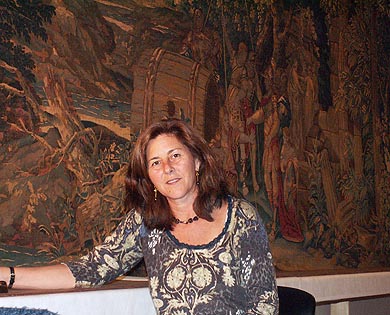If you’ve been reading our 10 Tips for Becoming a Conservator, you know how important it is to get involved with professional organizations. The Midwest Regional Conservation Guild (MRCG) is a great example of a regional group that has a lot to offer, and it exists to benefit conservators like you! I asked the current president, Laurie Booth, some general questions to get an idea of what the MRCG is all about:
1. When and how was the guild founded?

The guild was founded 30 years ago by a group of professionals in the Midwest who felt it was time to form a regional group in order to facilitate a dissemination of information and to represent the needs of Midwest conservators to organizations like the AIC and Heritage Preservation. Our last meeting was dedicated to a history of conservation in our flagship cultural institutions as well as a history of MRCG itself.
2. How many members does the guild have, and who is membership available to?
Membership fluctuates from year-to-year, but ranges from about 70-120 members. The Midwest is loosely defined in our case. We have no restrictions on memberships vis a vis location of our members. We have members from Colorado, Tennessee, New York, Pennsylvania, etc.
We are working on an official discount for student members – please refer to the wiki site where we will post more information on the discount (for meeting fees) when they become formalized. The actual discount will probably vary from meeting to meeting. 3-4 students are given discounts to each meeting but are expected to assist with registration and other duties in exchange.
3. What are the benefits of becoming an MRCG member?

Membership fees include receipt of our semi-annual newsletter and inclusion in the official directory. We have one meeting a year in the fall, sometimes associated with a special workshop that is occasionally opened to allied professionals, but only members are typically allowed to attend meetings, which involve separate fees.
Our meetings are designed to be low-priced and are usually offered at cost to our membership. In the last few years we have begun to offer workshops on such topics as museum storage, art in transit, the conservation of contemporary art, mastering fills, and similar subjects.
4. Does the MRCG have a website?
Our wiki site, set-up by Richard McCoy, objects conservator at the Indianapolis Museum of Art, is excellent and provides just about everything you need to know about the Guild and how to join.
5. Finally, what is the most special thing about your guild?
We pride ourselves on being open, friendly, convivial and an excellent place to meet fellow professionals. At our meetings (which tend to be small, typically 30-60 participants) we share information in a multi-disciplinary format that is not readily available at AIC conferences as most specialty group sessions run concurrently. Regional guilds are a great way to get a taste of the various disciplines available to the budding professional and to effectively network with conservators working at the various regional cultural institutions as well as those in private practice.
Thanks, Laurie, for that introduction to the MRCG! I hope our readers will take advantage of your website and contact you if they have any more questions!
 A detail of the painting
A detail of the painting






